Biluochun, pleasantly bitter
Suzhou 23rd April
Punctually at 5am the alarm rings. I quickly put on some clothes and take the first subway to the high-speed train station. Shanghai’s roads are still empty and very clean. Shiny shopping malls and western brands.
In less than a hour I am in Suzhou, where Sese is waiting for me; she will company me during the day and help with translation.
The purpose of my visit is Biluochun, the local green tea famous allover China. I like it because it combines thirst-quetching bitterness and fruity sweetness as no other green teas of my knowledge. I have been here a few times already; it is good to start the journey in a place I am acquainted with and where nannuoshan already have a few suppliers. It makes the change from the European office to the Chinese countryside less drastic.
Authentic Biluochun is produced on two mountains south-west of Suzhou, Xishan (on an island) and Dongshan (on a peninsula). In the past years I visited both areas and found Dongshan to offer better quality. It is here that we are heading today.
It took 40 minutes on fast-speed train from Shanghai to Suzhou, and additional three hours to reach the village on Dongshan by subway, bus and bus again.
One of my contacts pick us at the last bus stop. He lives in the Biluochun village and owns tea fields on the hills surrounding it. We spend just half a hour in his house, recovering from the long bus ride tasting two outstanding Biluochun. He offer us also a black te, a new experiment with Biluochun leaves. No good; he should better stick to the green tea he masters avoiding experimenting with tea leaves oxidation. We continue to the next and final stop, an ancient village on the other side of the peninsula.
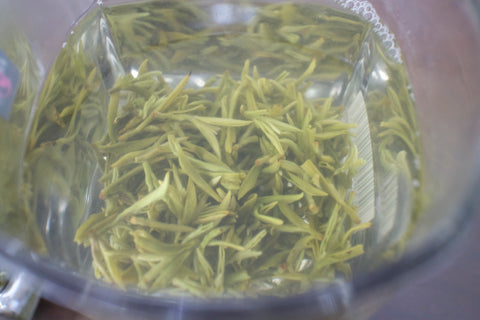

Tiny biluochun leaves steeping in a glass and me smelling the leaf aroma from the gaiwan's lid.
The village is a touristic attractions for Chinese and so our contact pick us at the gate to avoid paying the tourist fee. The whole family is very happy to see me again; I feel comfortable in their house and decide to spend there the afternoon.
Differently than all other farmers I met in the area, this family stores separately crops from different days. The weather as well wok-roasting influence greatly the taste of the tea. So we can select the batches we like the most. Given the limited quantity –about 500g per day- we are also sure that they do not import leaves from other regions to sell them as authentic: a common praxis here.
I taste the following crops:
- 20th March: very sweet, no bitterness, weak body. Extremely expensive. Certainly an outstanding tea but it lacks the feature I like the most in biluochun, the distinctive combination of bitterness and sweetness.
- 5th April: cheaper but tastier. Here the bitterness comes out and brings fullness to the tea. It really stimulates my palate! Unfortunately that day they produced only 380g. I buy them instantly, before some tourist steel the loot.
- 15th – 20th April: After having insisted for a while, they finally take out the tea harvested in the last few days. It is much cheaper, so they first tried selling me the expensive one. I taste a day after the other; they are all consistent and very similar, expect one, which is too grassy and astringent. I think they didn’t roasted for enough time, so the leaves remained a bit wet. They deny at first, but when I asked to drink them at the same time the difference was too evident also for them. I discard this batch and buy all the others.
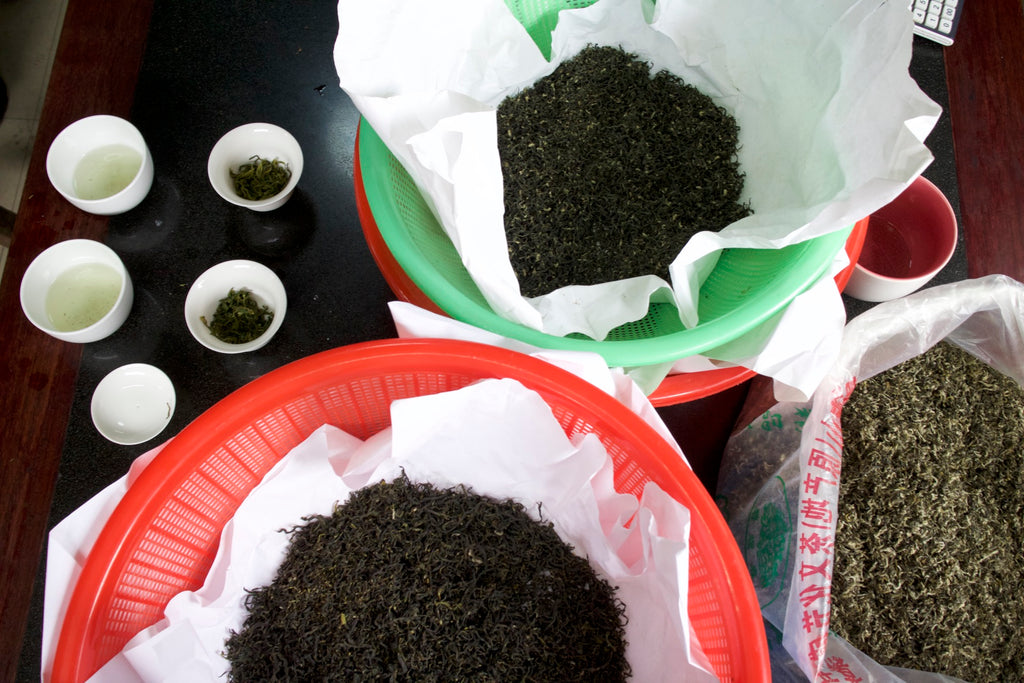

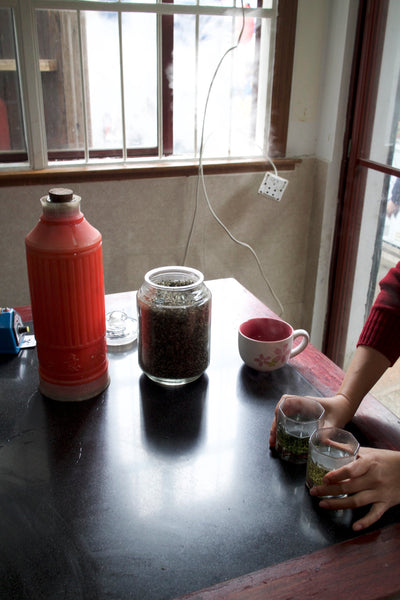
Comparing two Biluochun crops (top). Green tea is served in a glas to the guests and the water refilled from time to time (right). The locals have their own can and steep the same leaves all day long (left).
I take a break during the long tea tasting to learn how to roast fresh leaves in the wok. The leaves are first heated at high temperature to loose moisture and, most important, to stop the oxidation; so the tea leaves remain green.
Practicing roasting the fresh leaves in the wok.
In the afternoon we also visit the tea garden of the family, following one of their pickers. The bushes are spread over a wide area, sharing the field with medlar, chestnut and orange trees. Insects bites are visible on older leaves and even the leaves close to the tip of the branches are often pitted. This is a good sign, confirming that the farmer doesn't use pesticides.
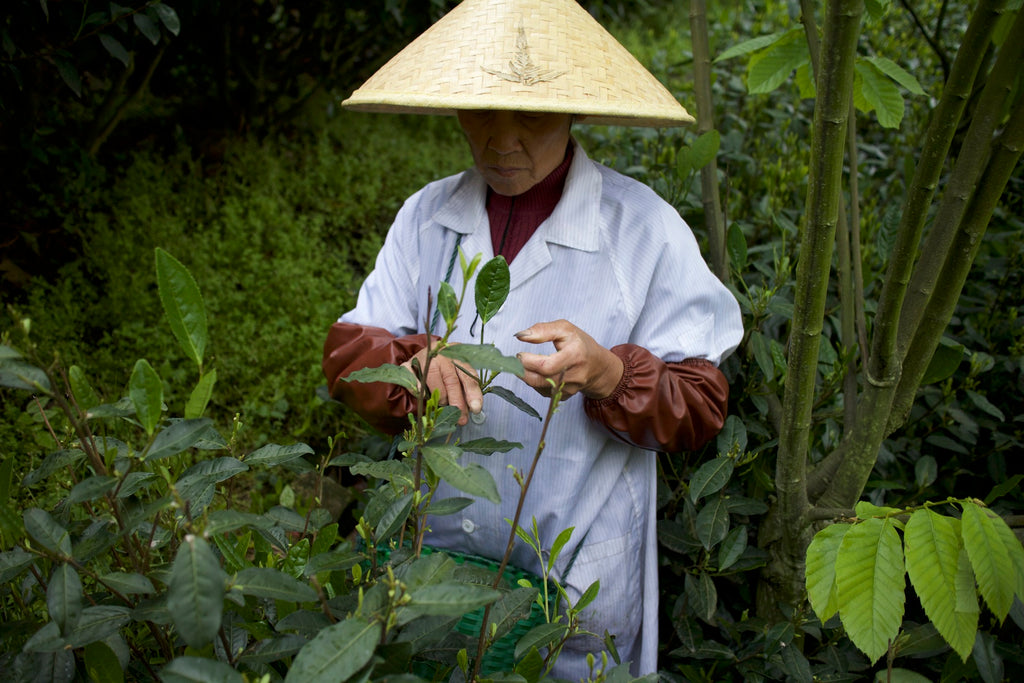
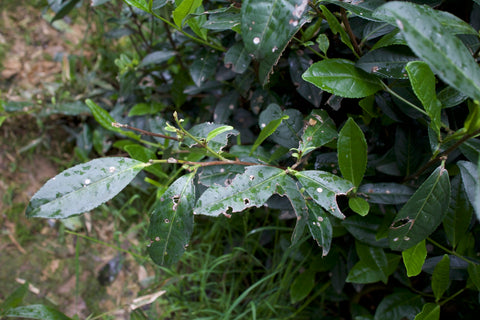
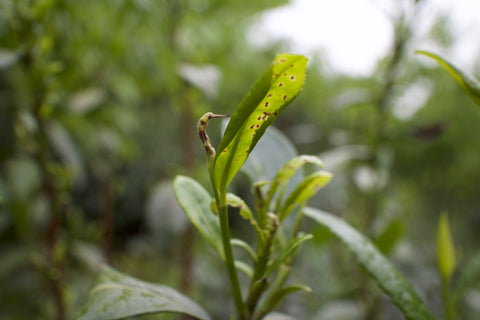
Picking fresh shoots (top). Insect bitten leaves (bottom).
I came a later this year to China to may taste also green tea harvested at the end of April. It is cheaper than the leaves picked before the Qing Ming festival (5th April) and certainly better value. Nonetheless I could not resist in buying also a little of the best early-spring biluochun that we tasted today. So also this year nannuoshan will feature an affortable Biluochun and a Superior Biluochun: and both will be cheaper than last years!
Happy and tired I take a late bus back to town and go straight to bed.
Suzhou, 24th April
Yesterday night I didn’t set the clock alarm. I really needed to recovery from the past short nights and regain some energy.
At lunch I go to the bus station to buy the ticket for the next destination and I manage to buy the ticket at the counter without any help, first time ever in China!
After many travels to China I finally decided to learn Mandarin. In the last three months I learned as many words and statements as I could involving in my study friends, flatmate and sport companions; just after few weeks everyone had enough of listening me speaking Mandarin at every occasion; they were looking forward to finally see me leaving for a month :-)
Before arriving in China I didn’t know if the locals will understand me. If you don’t speak the words with the right tone they might understand something completely wrong. Well, amazing enough, it works! I cannot say much, but I can manage to ask for food, directions, buying tickets and, most important when drinking tea all day, ask where is the closest toilette!
In the afternoon I visit the Suzhou tea market; I am alone and discussing taste, prices and bargain is still a little out of my language capability. But we manage to communicate, somewhat. I taste many different green teas and decide to buy three of them.




Tasting Bai Cha Long Jing, Biluochun and Hing Qing in Suzhou.
- Biluochun from the Zhejiang province; so a non-authentic one, but ways cheaper than the original Suzhou Biluochun. It is produced in a region with a different climate, but the leaves are processed exactly in the same way as the original Biluochun. The taste surprises me. Sweet as sugar cane and lingering.
- Bai Cha Long Jing: a tea made with Anji Bai Cha leaves pressed in the wok as Long Jing. The tea brings together the sweetness of Anji Bai Cha and the roasted nutty aroma of Long Jing. An extremely interesting combination!
- Hong Qing, an affordable baked green tea with a slightly pungent flavor, that reminds me of juniper. Also the color of the leaves is much darker than the others, similar to the leaves of juniper indeed.
Written by Gabriele





